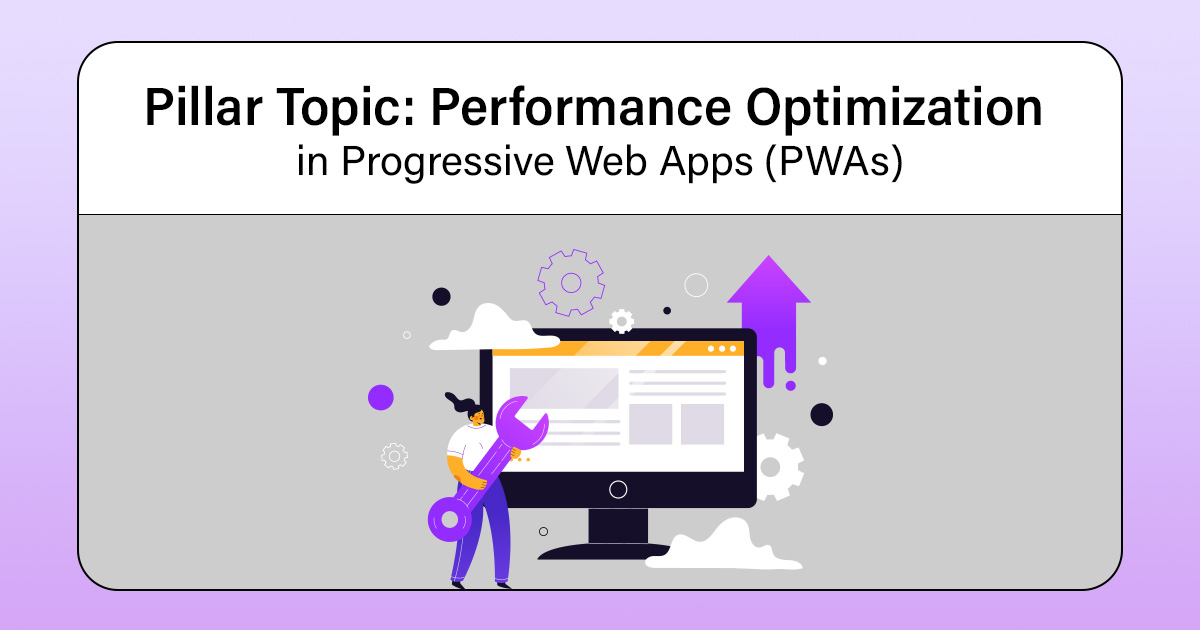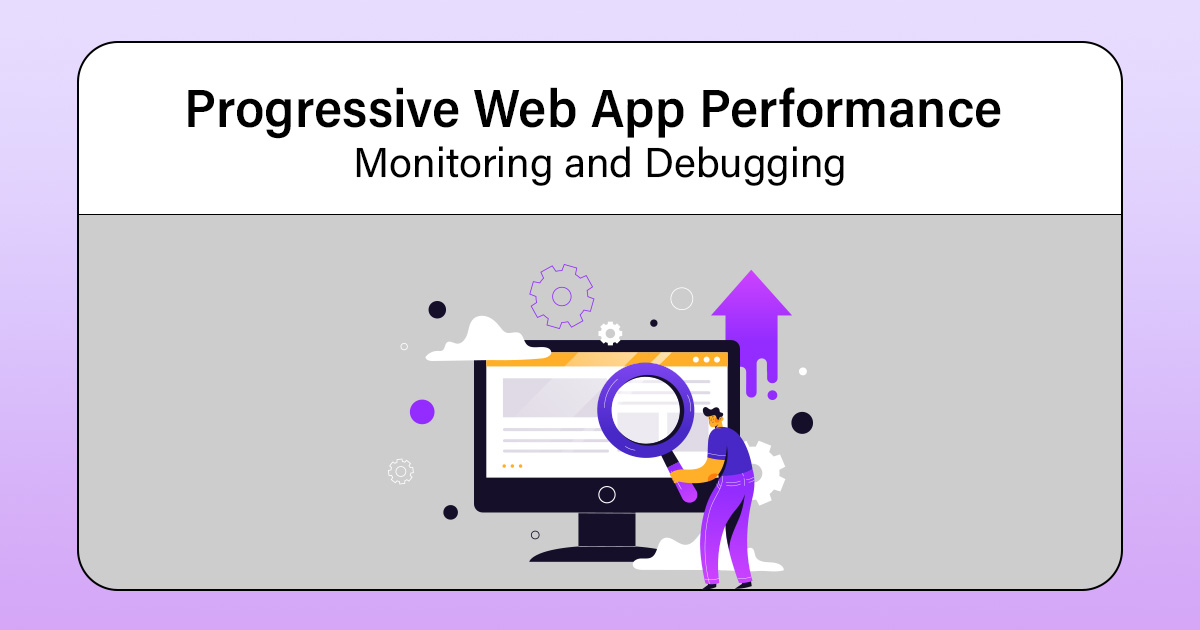
In the realm of Progressive Web Apps (PWAs), performance optimization holds a central position, akin to a guiding light illuminating the path towards enhanced user experience and efficiency.
This article delves into various dimensions of performance optimization in PWAs, encompassing caching strategies, resource loading techniques, monitoring and debugging tools, network request optimization approaches, as well as performance testing and benchmarking methodologies.
By exploring these facets comprehensively, this work aims to equip developers with valuable insights for optimizing the performance of PWAs.
Key Takeaways
- Caching strategies such as using the Cache Storage API and cache invalidation are important for optimizing the performance of PWAs.
- Resource loading techniques like lazy loading, code splitting, and preloading strategies can help improve initial page load times and reduce payload size in PWAs.
- Performance monitoring and debugging tools like performance profiling, browser devtools, and performance audits are essential for identifying and resolving performance issues in PWAs.
- Network request optimization techniques such as minimizing round trips, compression techniques, data streaming, and HTTP/2 multiplexing can significantly improve the performance of PWAs.
Deep Dive into Caching Strategies for PWAs: Cache Storage API, Cache Invalidation, and Versioning
This section provides an in-depth examination of caching strategies for PWAs, including the Cache Storage API, cache invalidation, and versioning. Caching plays a crucial role in improving the performance of Progressive Web Apps (PWAs) by storing frequently accessed resources locally on the client’s device.
One of the key challenges in caching is cache invalidation, which refers to the process of removing or updating cached content when it becomes stale or outdated. To address this challenge, PWAs leverage service workers, a JavaScript-based technology that acts as a proxy between the web application and the network.
The Cache Storage API is a core component of caching strategies for PWAs. It allows developers to store and retrieve responses from HTTP requests made by their applications. By utilizing this API, developers can implement various cache strategies such as network-first or cache-first approaches. These strategies determine whether to serve a cached response or make a new request based on factors like network availability and freshness of cached data.
Cache expiration is another important aspect of cache management in PWAs. By setting appropriate expiration headers on resources, developers can control how long these resources are considered fresh before they need to be revalidated or fetched again from the server. This helps ensure that users always receive up-to-date content while minimizing unnecessary network requests.
Versioning is an additional technique used in caching strategies for PWAs. By assigning unique version identifiers to cached resources, developers can easily manage updates and invalidations when deploying new versions of their applications. When a new version is released, service workers can compare version numbers and update caches accordingly.
Efficient Resource Loading in PWAs: Lazy Loading, Code Splitting, and Preloading Techniques
Efficient resource loading in progressive web applications can be achieved through the implementation of techniques such as lazy loading, code splitting, and preloading. These techniques offer various benefits and advantages that contribute to network optimization and overall performance improvement in PWAs.
- Lazy Loading: This technique involves loading only the necessary resources when they are needed, rather than upfront. It allows for faster initial page load times by deferring the loading of non-critical or below-the-fold resources. By prioritizing the loading of essential content first, lazy loading ensures a smoother user experience and reduces unnecessary network requests.
- Code Splitting: Code splitting divides a PWA’s JavaScript bundle into smaller chunks based on different application routes or components. These smaller bundles are then loaded dynamically when required, reducing the initial payload size. As a result, users experience faster load times since they only need to download the code that is relevant to their current view.
- Preloading Strategies: Preloading involves anticipating future resource needs and proactively fetching them before they are explicitly requested by the user’s actions or navigation. This approach leverages browser hints like <link rel=’preload’> to fetch critical resources in advance, ensuring that they are readily available when needed. By preloading key assets, PWAs can significantly reduce latency and improve responsiveness.
Progressive Web App Performance Monitoring and Debugging: Tools and Techniques

To effectively monitor and debug the performance of progressive web applications, developers can utilize a range of tools and techniques that provide valuable insights into the application’s behavior and identify potential bottlenecks or issues.
One such tool is performance profiling, which involves measuring various aspects of an application’s execution to identify areas for improvement. Performance profiling allows developers to pinpoint specific functions or code blocks that are causing delays or consuming excessive resources.
Browser devtools also play a crucial role in monitoring and debugging PWA performance. These tools provide real-time information about network requests, CPU usage, memory consumption, and rendering performance. Developers can use these insights to optimize their PWAs by identifying and addressing any performance-related issues.
Performance audits are another useful technique for monitoring PWA performance. These audits assess various aspects of the application, including load times, resource utilization, and rendering capabilities. By conducting regular performance audits, developers can proactively identify potential bottlenecks or inefficiencies in their PWAs.
Network throttling is another technique that can be used to simulate different network conditions during testing. By emulating slow network speeds or limited bandwidth, developers can evaluate how their PWAs perform under adverse conditions and optimize them accordingly.
Memory management is also a critical aspect of PWA optimization. By carefully managing memory allocation and deallocation within the application code, developers can prevent memory leaks and improve overall performance.
Optimizing Network Requests in PWAs: Minimizing Round Trips, Compression, and Data Streaming
Minimizing round trips, implementing compression techniques, and utilizing data streaming are effective strategies for optimizing network requests in the context of progressive web applications. These techniques aim to minimize latency, optimize bandwidth, reduce payload size, improve response times, and enhance data streaming.
- Minimizing round trips: By reducing the number of round trips between the client and server, network latency can be minimized. This can be achieved through techniques such as HTTP/2 multiplexing or batching multiple requests into a single request.
- Implementing compression techniques: Compressing data before sending it over the network can significantly reduce the amount of bandwidth required. Techniques like gzip or Brotli compression can compress text-based assets such as HTML, CSS, and JavaScript files to a smaller size without loss of information.
- Utilizing data streaming: Streaming data allows partial content to be delivered to the client while it is being generated on the server-side. This approach enables progressive rendering where visible parts of a web page are displayed early on while other resources continue to load in the background.
By employing these optimization strategies, progressive web applications can deliver better performance by minimizing latency, optimizing bandwidth usage by reducing payload size, improving response times by reducing round trips between clients and servers, and enhancing data streaming capabilities for improved user experience.
It is important for developers to consider implementing these techniques when building PWAs in order to provide users with fast-loading and highly responsive applications that work seamlessly even under challenging network conditions.
Performance Testing and Benchmarking for PWAs: Tools, Metrics, and Best Practices
Performance testing and benchmarking play a crucial role in evaluating the effectiveness of optimization strategies and identifying potential areas for improvement in the context of web application development. These activities involve measuring various aspects of a web application’s performance, such as response time, throughput, and resource utilization. By conducting performance profiling, developers can gain insights into how their code executes and identify any bottlenecks or inefficiencies that may be affecting overall performance.
Load testing is another important aspect of performance testing and involves simulating real-world usage scenarios to measure how well an application performs under different levels of user activity. This helps developers understand how their applications scale under heavy loads and identify any issues that may arise when multiple users are accessing the system simultaneously.
To ensure optimal performance, it is essential to establish performance budgets that define acceptable thresholds for various metrics such as page load time or network requests. These budgets serve as guidelines for developers to ensure that their applications meet certain performance standards.
Performance analysis techniques allow developers to analyze data collected during testing and benchmarking to gain insights into the root causes of performance issues. This analysis often involves using specialized tools to visualize and interpret complex datasets, enabling developers to make informed decisions about optimization strategies.
Overall, performance testing and benchmarking are integral components of the web application development process. They provide valuable insights into an application’s performance characteristics and help identify areas for improvement. By incorporating these practices into development workflows, developers can optimize their applications’ performance effectively, ensuring a seamless user experience while adhering to established performance budgets.
Conclusion
In conclusion, optimizing the performance of Progressive Web Apps (PWAs) is crucial for delivering a seamless user experience.
By implementing caching strategies such as the Cache Storage API and cache invalidation techniques, developers can ensure efficient resource loading.
Monitoring and debugging tools aid in identifying performance bottlenecks while optimizing network requests through minimizing round trips, compression, and data streaming further enhance PWA performance.
Finally, performance testing and benchmarking provide insights into the effectiveness of optimizations.
With these techniques at their disposal, developers can elevate the speed and responsiveness of PWAs to new heights.

